Comments / Questions (16)
![]() Katherine wrote:
Katherine wrote:
Als ik de 15 meerderingen gedaan heb voor maat small kom ik inderdaad aan 252 steken maar als ik dan 81+44+82+44 op een hulpdraad moet zetten heb ik 1 steek over...hoe moet het dan?
19.12.2023 - 15:37DROPS Design answered:
Dag Katherine,
De laatste steek zet je op de hulpdraad met de steken voor het achterpand, zoals ook in de tekst beschreven staat.
20.12.2023 - 18:49
![]() Leue wrote:
Leue wrote:
Zijn in patroon A1 enkel de oneven rijen getekend?
18.12.2023 - 13:59DROPS Design answered:
Dag Leue,
In het telpatroon zijn alle rijen getekend, dus zowel de even als de oneven rijen.
10.01.2024 - 09:58
![]() Lyse Goyette wrote:
Lyse Goyette wrote:
Bonjour est ce qu'il y aurait une erreur dans le nombre de fois d'augmentations pour la 2ième grandeur , ( moi il me manque 5 augmentations .... Merci de votre réponse ...
23.08.2022 - 05:35DROPS Design answered:
Bonjour Mme Goyette, vous avez 140 m avant le raglan, vous augmentez 15 fois 8 mailles = 140 +(15*8)= 260 mailles quand toutes les augmentations des raglans ont été faites. En espérant que ceci puisse vous aider. Bon tricot!
23.08.2022 - 08:06
![]() Margaret Sedgwick wrote:
Margaret Sedgwick wrote:
Hi, would love to knit this lovely pattern, but just cannot use circular needles. Help! Please. Thank you.
15.01.2022 - 09:14DROPS Design answered:
Dear Mrs Sedgwick, this lesson might help you to adapt this pattern into straight needles. Happy knitting!
17.01.2022 - 08:09
![]() GRETA VANTWEMBEKE wrote:
GRETA VANTWEMBEKE wrote:
Cet possible d'avoirle potron en nerlandais svp
19.11.2021 - 20:07DROPS Design answered:
Bonjour Mme Vantwembeke, tout à fait, cliquez sur le menu déroulant sous la photo et sélectionnez "nederlands" - Bon tricot!
22.11.2021 - 07:16
![]() Josee Brunette wrote:
Josee Brunette wrote:
Bonjour.. je tricote l'empiècement. J'ai terminé les augmentations pour le Raglan et j'ai atteint le nombre de mailles requis cependant, je n'ai pas la longueur demandé. Selon les instructions, je dois continuer jusqu'à la longueur indiquée. Dois-je aussi continuer les augmentations?? Merci à l'avance Josée
21.09.2021 - 01:10DROPS Design answered:
Bonjour Mme Brunette, si votre tension en hauteur n'est pas juste, tricotez simplement comme avant jusqu'à la hauteur indiquée, mais n'augmentez plus, pensez à bien arrêter après un rang impair de A.1 pour que le tour suivant (lorsque vous divisez l'ouvrage) soit un tour pair de A.1. Bon tricot!
21.09.2021 - 09:08
![]() Josée Brunette wrote:
Josée Brunette wrote:
Bonjour, pour l'empiècement, j'ai 140 mailles. On me demande de tricoter 1 maille endroit marqueur - glisser 50 mailles, marqueur - 20 mailles marqueur - 50 mailles, marqueur - 20 mailles - marqueur. 1+50+20+50+20 égal 141 mailles. Pouvez vous m'expliquer ce que je ne comprends pas?? Merci
12.09.2021 - 20:18DROPS Design answered:
Bonjour Mme Brunette, la 1ère maille ne compte pas, vous la tricotez pour décaler le début du tour, autrement dit vous avez: 50+20+50+20 = 140 mailles (la maille que vous avez tricoté avant de mettre le marqueur est maintenant la dernière maille du tour). Bon tricot!
13.09.2021 - 09:05
![]() Stephanie Bevis wrote:
Stephanie Bevis wrote:
Should the smaller sized needle be 3 mm (as noted in the pattern instructions) or 3.5 mm as stated in the list of equipment needed, please?
27.03.2021 - 19:00DROPS Design answered:
Dear Stephanie, it seems it's a mistake of the equipment section: you use 3 mm needles, instead of 3.5 mm. We'll proceed to correct the mistake. Happy knitting!
28.03.2021 - 20:38
![]() Carin Perman wrote:
Carin Perman wrote:
Beskrivning :sticka som förut över de första 81 mask.o sätt dem på en tråd sticka över nästa 44 och sätt på en tråd osv Jag undrar skall maskorna sitta kvar på rundstickan förklara den här biten av stickbeskr för mig Tack på förhand
19.02.2021 - 17:19DROPS Design answered:
Hej Carin. Efter att du har satt maskor på tråden så ska du endast ha de 44 m till vänster axel kvar på stickan. Du stickar efter detta de olika delarna fram och tillbaka var för sig. Mvh DROPS Design
22.02.2021 - 11:37
![]() Adriana wrote:
Adriana wrote:
Holaaa!! Consulta: a que le llaman extra fine cuando hablan del grosor del hilado?. Muchas gracias.
09.01.2021 - 01:35DROPS Design answered:
Hola Adriana. Merino Extra Fine es una forma especial del hilo (cable spun). Normalmente es para agujas de 4-5 mm y 50 gr = aprox. 105 m. Estos hilos parecen voluminosos, pero al trabajar la labor tienen una textura bastante fina.
10.01.2021 - 12:21
Elegant Emerald#elegantemeraldneckwarmer |
||||||||||||||||||||||
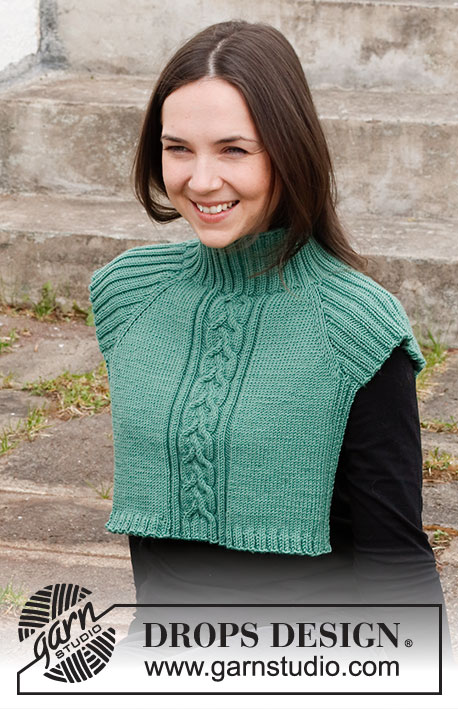 |
 |
|||||||||||||||||||||
Knitted neck warmer in DROPS Merino Extra Fine. The piece is worked top down with raglan and cables. Sizes S - XXXL.
DROPS 214-36 |
||||||||||||||||||||||
|
------------------------------------------------------- EXPLANATIONS FOR THE PATTERN: ------------------------------------------------------- RIDGE/GARTER STITCH (worked back and forth): Knit all rows. 1 ridge in height = Knit 2 rows. PATTERN: See diagrams A.1 and A.2. INCREASE TIP (evenly spaced): To work out how to increase evenly, count the total number of stitches on the needle (e.g. 44 stitches) and divide by the number of increases to be made (e.g. 4) = 11. In this example, increase by making 1 yarn over after each 11th stitch. On the next row/round work the yarn overs twisted to avoid holes. RAGLAN: Increase 1 stitch on each side of the marker threads in each transition between body and shoulders (8 stitches increased on each increase-round): Work until there is 1 stitch left before marker thread, 1 yarn over, knit 2 (marker thread sits between these 2 stitches), 1 yarn over (= 2 stitches increased). On the next row work the yarn overs twisted to avoid holes. Then the new stitches are worked in stockinette stitch on the front and back pieces, and in rib on the shoulders (= knit 2, purl 2). BINDING-OFF TIP: To avoid the bind-off edge being tight you can bind off with a larger size needle. If the edge is still tight, make 1 yarn over after approx. each 4th stitch at the same time as binding off; the yarn overs are bind off as normal stitches. ------------------------------------------------------- START THE PIECE HERE: ------------------------------------------------------- NECK WARMER – SHORT OVERVIEW OF THE PIECE: The neck and yoke are worked in the round with circular needle, top down. The yoke is divided for the front/back pieces and shoulders. Then stitches are knitted up along the shoulder-edges and the front and back pieces finished separately, back and forth. NECK: Cast on 124-132-132 stitches with circular needle size 3 mm = US 2,5 and Merino Extra Fine. Knit 1 round. Then work rib (= knit 2, purl 2) in the round for 8 cm = 3⅛". The next round is worked as follows: Knit 2, then knit 44-44-44 and at the same time increase 4 stitches evenly spaced over these stitches – read INCREASE TIP, knit 18-22-22, knit 44-44-44 and at the same time increase 4 stitches evenly spaced over these stitches, knit 16-20-20 = 132-140-140 stitches. Change to circular needle size 4 mm = US 6. Knit 1 round. Insert 1 marker after the 26th stitch on the round (= mid back), the yoke is measured from this marker! YOKE: Now insert 4 marker threads as follows: Knit 1 and insert the first marker thread after this stitch (= transition between left shoulder and back piece – this is now the beginning of the round). Insert the other 3 marker threads without working the stitches as follows: Skip the next 50-50-50 stitches, insert a marker thread here (= transition between back piece and right shoulder), skip the next 16-20-20 stitches, insert a marker thread here (= transition between right shoulder and front piece), skip the next 50-50-50 stitches, insert a marker thread here (= transition between front piece and left shoulder), there are 16-20-20 stitches left on the round after the last marker thread. Now work pattern as follows: * Knit 1, make 1 yarn over, knit 9-9-9, work A.1 over the next 30 stitches, knit 9-9-9, make 1 yarn over, knit 2 (marker thread is between these 2 stitches), make 1 yarn over, work rib (purl 2, knit 2) over the next 12-16-16 stitches, purl 2, make 1 yarn over, knit 1, (marker thread here) *, work from *-* 1 more time = 8 stitches increased for RAGLAN – read description above. Continue this pattern in the round and increase to raglan every 2nd round a total of 15-15-19 times = 252-260-292 stitches. REMEMBER THE KNITTING GAUGE! When all the increases are finished the piece measures approx. 11-11-14 cm = 4⅜"-4⅜"-5½" from the marker by the neck. If the piece is shorter than this, continue working to the correct length – make sure you finish after an odd row in A.1. The next round is worked as follows: Work as before over the first 81-81-89 stitches and place these stitches on a thread (= back piece), work the next 44-48-56 stitches and place these on a thread (= right shoulder), work the next 82-82-90 stitches and place these on a thread (= front piece), work the next 44-48-56 stitches (= left shoulder) and leave these stitches on the needle. Move the last stitch onto the thread with the stitches for the back piece (= 82-82-90 stitches on the back piece). The raglan lines are now on the front/back pieces. All sections are finished separately, back and forth. LEFT SHOULDER: = 44-48-56 stitches. Work rib back and forth as before with 1 edge stitch in GARTER STITCH – read description above, on each side. After working 8 rows bind off with knit over knit and purl over purl. RIGHT SHOULDER: Work in the same way as the right shoulder. FRONT PIECE: Start from the right side with circular needle size 4 mm = US 6 and Merino Extra Fine, and knit up 8 stitches in each edge stitch along the side of the right shoulder (the 8 rows of rib), work the 82-82-90 stitches from the thread for the front piece as before, knit up 8 stitches in each edge stitch along the side of the left shoulder (the 8 rows of rib) = 98-98-106 stitches. Work the next row from the wrong side as follows: Purl 2, knit 2, purl 2, knit 2, pattern as before over the next 82-82-90 stitches, knit 2, purl 2, knit 2, purl 2. Continue back and forth like this; i.e. pattern as before with 8 stitches in rib on either side (the outermost 2 stitches are in stockinette stitch to allow the edges to roll inwards). Continue like this until the piece measures approx. 18-18-18 cm = 7"-7"-7" from the division (where stitches were knitted up on each side) – adjust to finish after row 4 in A.1. Now increase 8-8-8 stitches evenly spaced – read INCREASE TIP, on each side of A.1 (do not increase over the ribbed sections) = 114-114-122 stitches. Change to circular needle size 3 mm = US 2,5 and work 1 row back with knit over knit and purl over purl. Now work from the right side as follows: Rib as before over the first 8 stitches and (= knit 2, purl 2) over the next 34-34-38 stitches, work A.2 over A.1, rib (= knit 2, purl 2) over the next 34-34-38 stitches and rib as before over the last stitches. Continue this rib for a total of 4 rows. Bind off with knit over knit and purl over purl – read BINDING-OFF TIP. The neck warmer measures 34-35-38 cm = 13⅜"-13¾"-15" from the shoulder down. BACK PIECE: Work in the same way as the front piece. |
||||||||||||||||||||||
Diagram explanations |
||||||||||||||||||||||
|
||||||||||||||||||||||
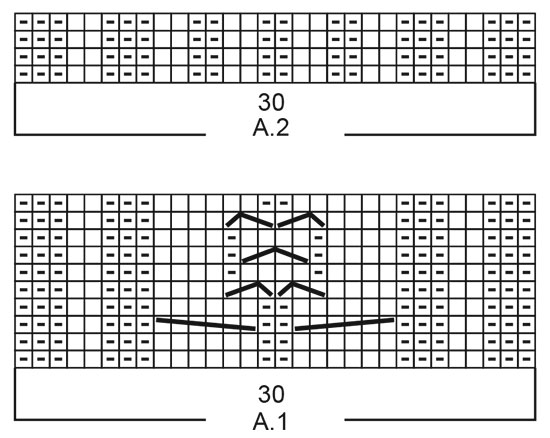
|
||||||||||||||||||||||
Have you finished this pattern?Tag your pictures with #dropspattern #elegantemeraldneckwarmer or submit them to the #dropsfan gallery. Do you need help with this pattern?You'll find 23 tutorial videos, a Comments/Questions area and more by visiting the pattern on garnstudio.com. © 1982-2025 DROPS Design A/S. We reserve all rights. This document, including all its sub-sections, has copyrights. Read more about what you can do with our patterns at the bottom of each pattern on our site. |
||||||||||||||||||||||








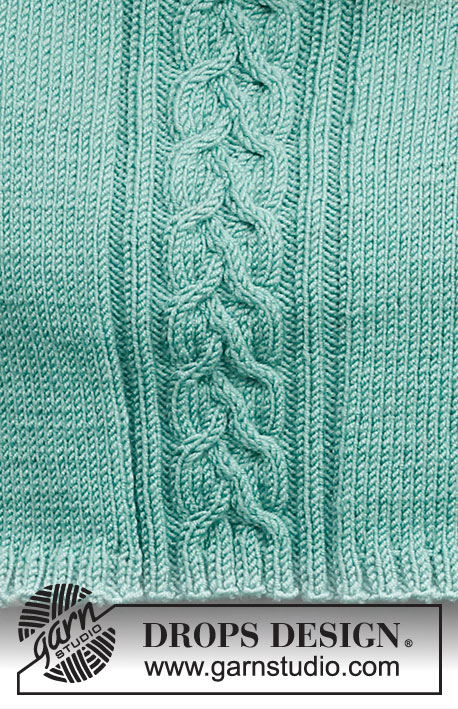
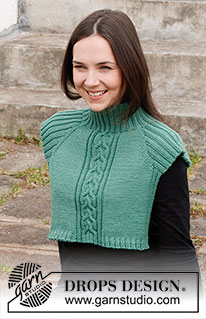
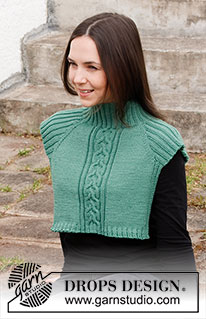
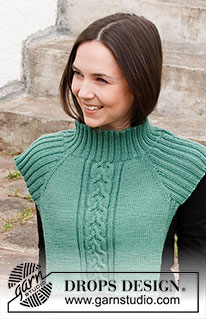





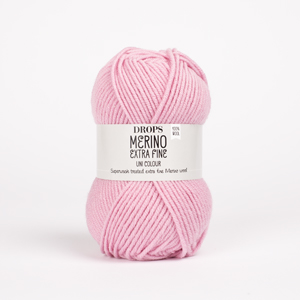
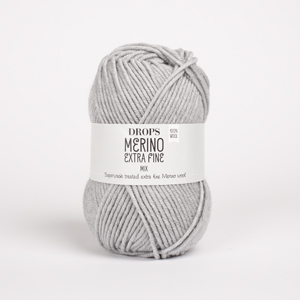
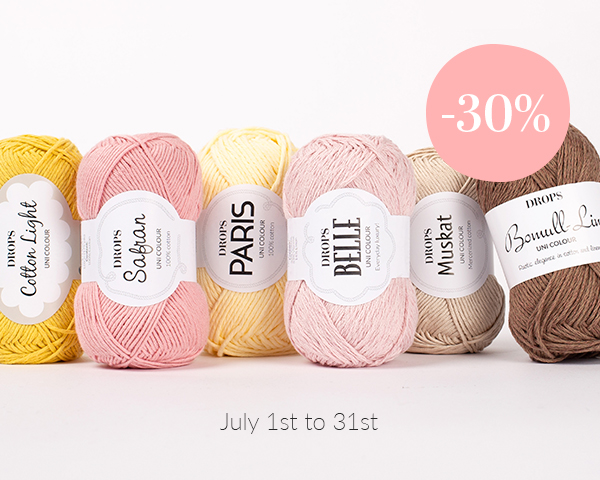
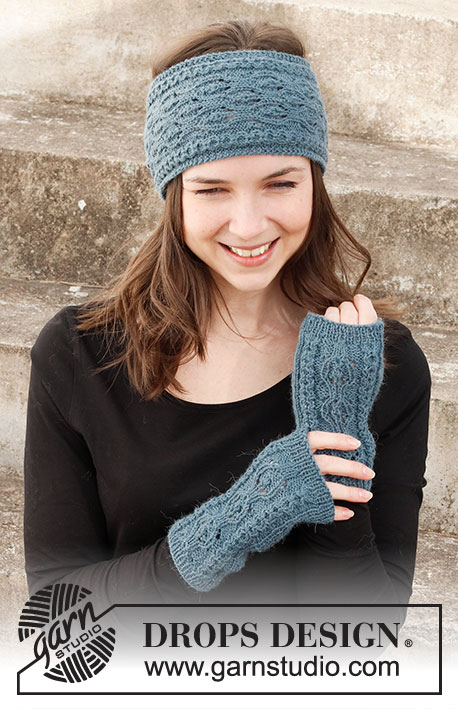

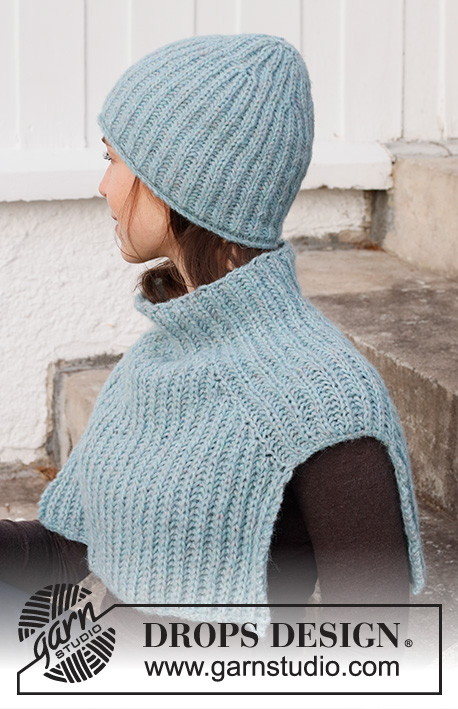












































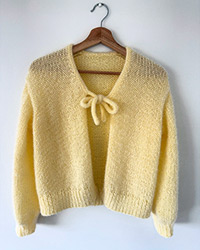
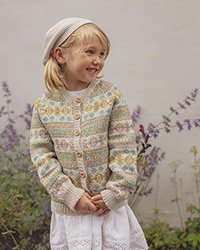
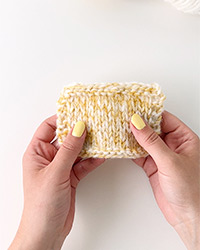
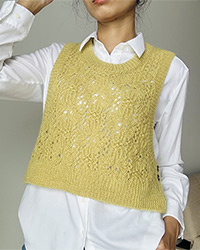

Post a comment to pattern DROPS 214-36
We would love to hear what you have to say about this pattern!
If you want to leave a question, please make sure you select the correct category in the form below, to speed up the answering process. Required fields are marked *.